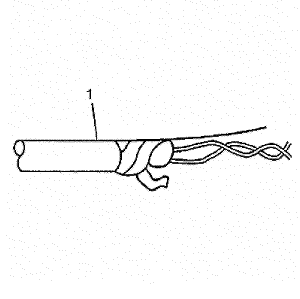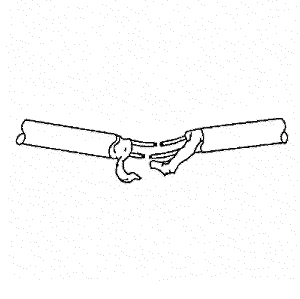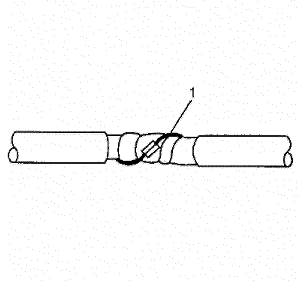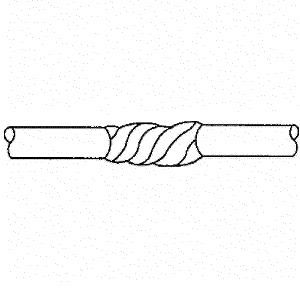Splicing Twisted or Shielded Cable
Danger: In order to reduce the risk of personal injury, loss of high-voltage isolation to earth and higher system impedance, do not attempt to repair any HV wiring, connector or terminal that is damaged. High-voltage coaxial type cables are not repairable. Never attempt to repair a coaxial type cable. The entire cable/harness or component must be replaced. In order to maintain system integrity and personal safety, never attempt to repair any high-voltage wiring, cables or terminals. Performing this procedure on high-voltage circuits may result in serious injury or death.
Twisted/shielded cable is used in order to protect wiring from electrical noise. Two-conductor cable of this construction is used between the radio and the Delco-Bose® speaker/amplifier units and other applications where low level, sensitive signals must be carried. Follow the instructions below in order to repair the twisted/shielded cable.

- Remove the outer jacket (1). Use care not to cut into the drain wire of the mylar tape.
- Unwrap the tape. Do not remove the tape. Use the tape in order to rewrap the twisted conductors after the splice is made.

- Prepare the splice. Untwist the conductors and follow the instructions for Splicing Copper Wire Using Splice Sleeves . Staggering the splices by 65 mm (2.5 in) is recommended.

Note: Apply the mylar tape with the aluminium side inward. This ensures good electrical contact with the drain wire.
- Re-assemble the cable.
| • | Rewrap the conductors with the mylar tape. If the mylar tape is damaged, use 3M product AL-36FR to replace the damaged mylar tape. |
| • | Use caution not to wrap the drain wire in the tape (1). |
| • | Follow the splicing instructions for copper wire and splice the drain wire. |
| • | Wrap the drain wire around the conductors and tape with electrical tape to replace the outer insulation. |

- Tape over the entire cable. Use a winding motion when you apply the tape.
| ©© Copyright Chevrolet. All rights reserved |



